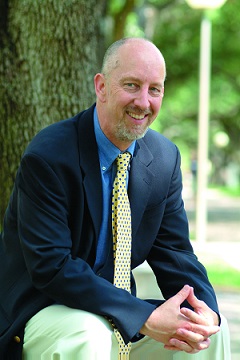WHEN Brian McAllister Linn went to Ohio State University in 1975, his graduate adviser gave a lecture on the US Army and the Philippine-American War. The topic so fascinated him that he wound up spending 20 years researching for a definitive book on the conflict.
Linn pored over US Army records, letters, diaries and memoirs of American soldiers who served in the Philippines, as well as documents captured from Filipino insurgents. His work culminated in an award-winning book, The Philippine War 1899-1902, published in 2000.
After winning the revolution in 1898, the Philippines declared independence from Spain, which was also in a war with the United States. America annexed the Philippines after winning the Spanish-American War. That, however, put the Americans on a collision course with Filipino revolutionaries, led by General Emilio Aguinaldo.
The Americans believed that they were putting down an insurrection against their lawful authority, while to the Filipinos, America was on a war of conquest against an independence movement.
Along the way during his research, Linn found a picture different from the commonly held views of the conflict: that it was a genocide. Instead, the war varied from province to province and town to town. In some areas, there was no fighting at all.
Linn was “appalled” by what he called “sloppy research” made by many American historians that contributed to the common perceptions about the war.
“Many had not even been to the National Archives to look at the US Army records. They simply repeated, often mistakenly, stories that they read in the newspapers — and the press were no more accurate or unbiased in 1900 than Fox News is nowadays,” says Linn, now a professor of history at Texas A & M University.
Also striking about the book is that the US largely owed its victory to Aguinaldo’s mistakes as well as to political and social divisions that prevented the Filipinos from presenting a united front against the Americans.
The Filipinos were already divided before the war began on February 4, 1899.
For all their pronouncements about democracy, Aguinaldo and his contemporaries were hardly egalitarian. That made them unable to rally the people in the war against the Americans.
 For one, the Philippines’ first national legislature, the Malolos Congress, was “hardly representative,” Linn pointed out. Congressional elections were held after the country declared independence. “But the franchise was so restricted as to make a mockery of any claim to a popular mandate: in Batangas City, a municipality of 33,000 inhabitants, only 78 people were eligible to vote.”
For one, the Philippines’ first national legislature, the Malolos Congress, was “hardly representative,” Linn pointed out. Congressional elections were held after the country declared independence. “But the franchise was so restricted as to make a mockery of any claim to a popular mandate: in Batangas City, a municipality of 33,000 inhabitants, only 78 people were eligible to vote.”
As a result, the elections became a mere contest among the political ruling class, known as the principalia during the Spanish colonial period. The Congress was dominated by politicians, land owners, businessmen and professionals.
“They had no intention of sharing either political or economic power with the peasantry, who composed of over nine-tenths of the Filipino population,” Linn’s book concluded. “Aguinaldo’s revolution was political, not social.”
Today, Filipinos fed up with the system have renewed efforts to curb political dynasties. That may well be the last remaining battle of the Philippine Revolution.
Adding to Aguinaldo’s woes was the social structure in the nascent Philippine Army’s officer corps. “Aguinaldo and his subordinates handed out promotions and commissions with abandon,” Linn wrote, with personal connections being the main credentials.
It would eventually plague Aguinaldo. “Many of these officers tended to view the military chain of command as essentially personal: they might obey the direct orders of a friend or a social superior but not necessarily those of his deputy.”
Another critical weakness was Aguinaldo’s failure to institute a training program for the officers and troops. That left the chief of the army, General Antonio Luna, the most able officer. A pharmacist by profession, Luna studied military science under Belgian general Gerard Leman, who oversaw the military education of King Albert I of Belgium.
But Luna never had full support from Aguinaldo, described by Linn as a politician “who was unable to place national interests above personal gain. Focused on imposing personal control on the rest of the archipelago, he consistently underestimated the danger posed by the invaders.”
Luna was murdered by Aguinaldo’s men on June 5, 1899, when he became critical of Aguinaldo. Early in the war, Luna ordered the Kawit Battalion disarmed and arrested for insubordination. They maintained that they answered only to Aguinaldo.
However, regionalism also doomed Aguinaldo. Revolutionaries in the Visayas supported the independence movement but not his vision of a Tagalog-led, Manila-based Philippine republic. Aguinaldo himself was captured by the Americans in 1901 with help from Macabebe natives of Pampanga province.
Looking back, Linn said if war were to come to the Philippines today, the country would need a leader who is “able to overcome the factions, the interest groups, the regional and cultural rivalries.”
“National unity, rather than personal unity, is essential,” he stressed.
When Aguinaldo moved to declare Philippine independence, his prime minister and concurrent foreign affairs minister, Apolinario Mabini, viewed it as premature.
Mabini advised that the government, backed by a strong army, should be organized first in areas liberated from the Spanish. Learning from the French and American revolutions, he envisioned a government that reflected the people’s will.
Aguinaldo ignored him.

